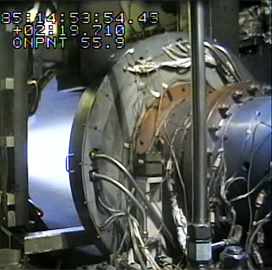
Breaking News
 BREAKING: Secret Study Conducted By Henry Ford Health Conclusively Proves...
BREAKING: Secret Study Conducted By Henry Ford Health Conclusively Proves...
Discovering Gems of Understanding
 Trump's Corporate Favor Factory
Trump's Corporate Favor Factory
 Google Quantum Supremacy And Artificial Intelligence
Google Quantum Supremacy And Artificial Intelligence
Top Tech News
 Graphene Dream Becomes a Reality as Miracle Material Enters Production for Better Chips, Batteries
Graphene Dream Becomes a Reality as Miracle Material Enters Production for Better Chips, Batteries
 Virtual Fencing May Allow Thousands More Cattle to Be Ranched on Land Rather Than in Barns
Virtual Fencing May Allow Thousands More Cattle to Be Ranched on Land Rather Than in Barns
 Prominent Personalities Sign Letter Seeking Ban On 'Development Of Superintelligence'
Prominent Personalities Sign Letter Seeking Ban On 'Development Of Superintelligence'
 Why 'Mirror Life' Is Causing Some Genetic Scientists To Freak Out
Why 'Mirror Life' Is Causing Some Genetic Scientists To Freak Out
 Retina e-paper promises screens 'visually indistinguishable from reality'
Retina e-paper promises screens 'visually indistinguishable from reality'
 Scientists baffled as interstellar visitor appears to reverse thrust before vanishing behind the sun
Scientists baffled as interstellar visitor appears to reverse thrust before vanishing behind the sun
 Future of Satellite of Direct to Cellphone
Future of Satellite of Direct to Cellphone
 Amazon goes nuclear with new modular reactor plant
Amazon goes nuclear with new modular reactor plant
 China Is Making 800-Mile EV Batteries. Here's Why America Can't Have Them
China Is Making 800-Mile EV Batteries. Here's Why America Can't Have Them
Aerojet Rocketdyne hypersonic scramjet engine sets new thrust record

A year of ground testing saw the engine generate 13,000 lb of thrust with over an hour of sustained combustion under various hypersonic flight conditions.
Hypersonic technology is regarded as one of the great game changers in 21st century warfare. Just as supersonic flight rendered all previous warplanes and anti-aircraft defenses all but obsolete overnight, aircraft and missiles that can fly at over five times the speed of sound would require an equally great advance in radar, data processing, air defenses, and even artificial intelligence to counter.
However, one major challenge is finding a way to make a craft maintain hypersonic velocity. Currently, most test vehicles are actually hypersonic gliders, which are dropped from a mothership at high altitude, then accelerated to above Mach 5 (3,709 mph, 5,969 km/h) either by rocket or by going into a dive to build up speed. That's fine for a test program, but for something practical, gliding has its limitations – not least of which is restricted range and the inability to operate at lower altitudes.
The approach of the AFRL-Aerojet Rocketdyne team to maintain flight is to use a scramjet. A decade ago, they produced the first hydrocarbon-fueled and cooled air-breathing hypersonic flight test with the Air Force's X-51A Waverider. Now they are working on an 18-foot (5.5-m) Generation-3 version, which can propel a vehicle 10 times the size of the X-51 to hypersonic speed. The new engine is claimed to have increased performance at a lower price.

 China Innovates: Transforming Sand into Paper
China Innovates: Transforming Sand into Paper

